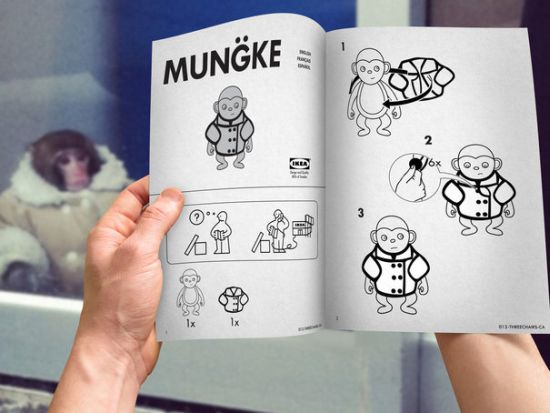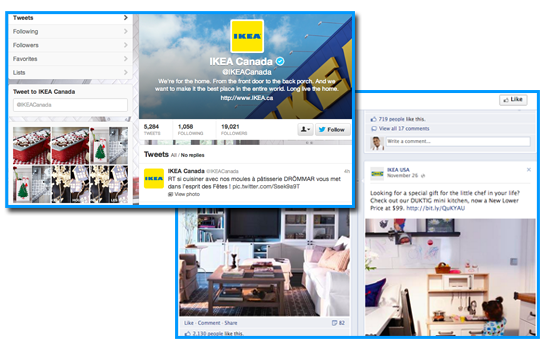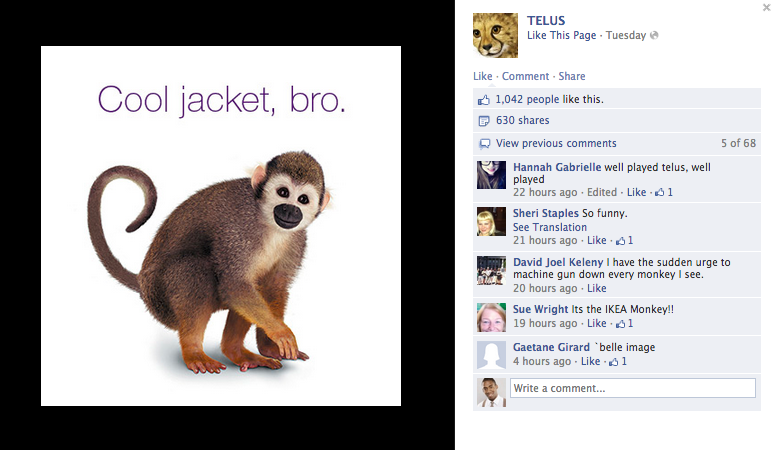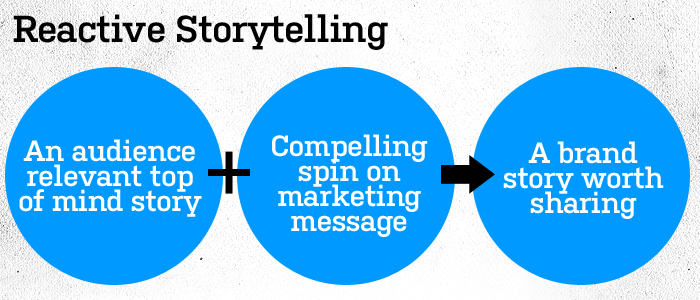Did you hear about the monkey in IKEA that was spotted with a fur jacket on? Did you hear about IKEAs reaction to the monkey? If not, it’s not because you missed something awesome… it’s actually the complete opposite. They did.
IKEA missed out on a great opportunity to use reactive storytelling to further enhance their brand and stay top of mind. Instead, they took an approach that is traditional, boring and embraces the status quo. There was an opportunity to generate buzz, earned media but instead, Ikea continued with business as usual. This is what their networks looked like after it happened:
Do you see how cool that is? No?
Of course not. It’s boring.
Some businesses will tell you that it is hard to develop unique, compelling content for large organizations like this which is true to some extent, but I see this as more of an issue with idea identification and social media opportunity management.
The Opportunity to Listen
The easiest way to find content that will potentially go viral is to listen to the public. All it takes is a little social media monitoring through search, buzzfeed or a platform like Radian6 or Sysomos to identify a trend in your industry or related to your product. Social Media is filled with conversations happening from people as close as your neighbours to people on the other side of the globe. Brands have an opportunity to listen to these conversations and make decisions based on them that can lead to potential new business or compelling content that could go viral.
Organizations have been using social media to listen to conversations for years now. Whether it’s through a Social Media Command Center or an in-house team of marketers with their fingers on the pulse. There is a great opportunity for brands; large and small to find opportunities through social media.
Take Telus for example. After they came across the Monkey story at IKEA they thought about how they could integrate it with their business. In fact, they recognized an opportunity to show their own monkey and make a reference that would show the brand in a light, fun and in the know kind of way. Here’s what they shared on their Facebook page:
While the amount of engagement on the post was limited to their existing fans; this post promoted would have set the internet on fire. Another example of how a brand finds something interesting happening in the social space and connects it to their brand was Kit Kat after the Red Bull Stratos jump. They launched this video and were able to generate earned media and a huge spike in brand conversations.
Here are a handful of other brands who are utilizing reactive storytelling effectively.
Conclusion
I know many of the approaches to reactive storytelling I’ve talked about over the last few weeks might make some community managers and brand managers uncomfortable, but they work. I’ve been using Reactive Storytelling for several brands over the last few months and I typically see a 50% to 100% difference in these types of content in comparison to others. It’s a simple concept:
Guys, the new year is coming.
Recognize the emergence of memes and understand how you can use this cultural phenomena to your advantage. Whether it’s a meme directly related to your business or simple a consumer insight that could be leveraged to spark an increase in brand relevant conversation.
Make it your resolution to actually make the leap and do something beyond the status quo.
QUICK UPDATE:
It appears that IKEA did leverage this story. Unfortunately, Telus and the internet went Bananas before they did and capitalized on it. The key to reactive storytelling is not to react for the sake of reacting. The key to reactive storytelling is to react in a way that is worth talking about and will turn some heads. That said, hats off to the IKEA team for doing something good…Next time, be great.





